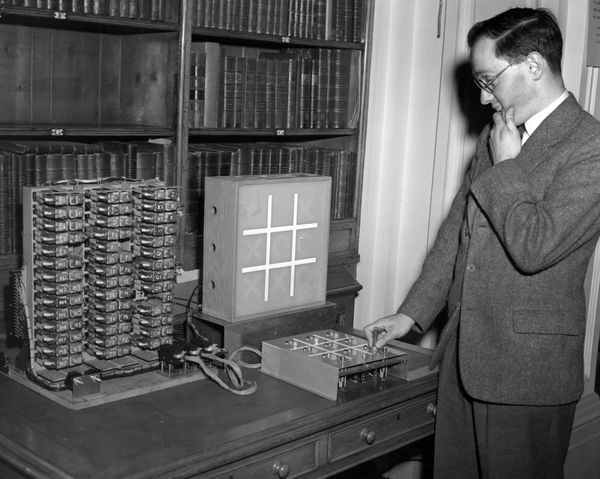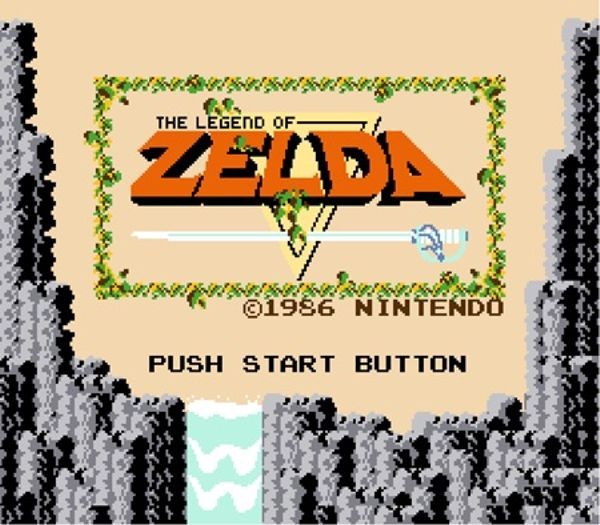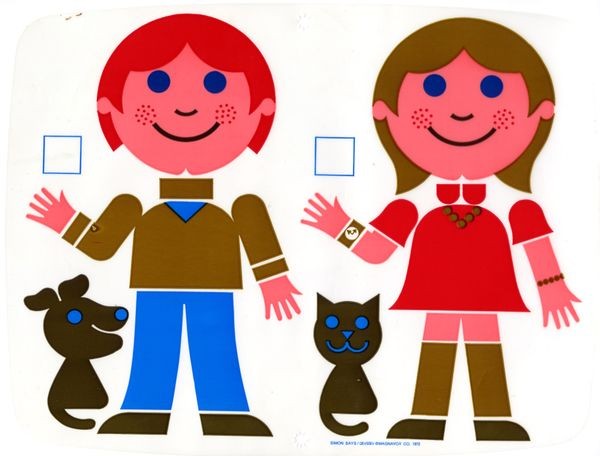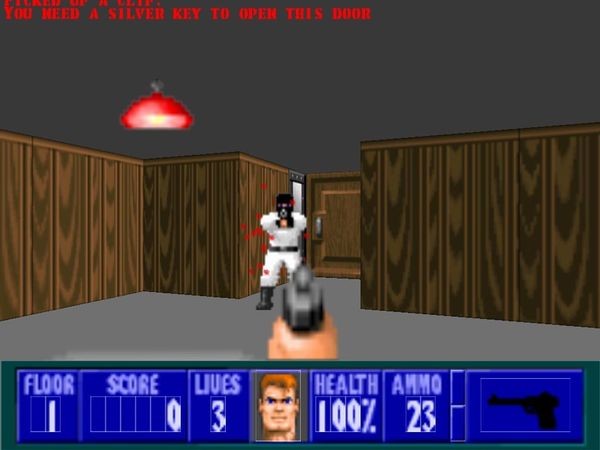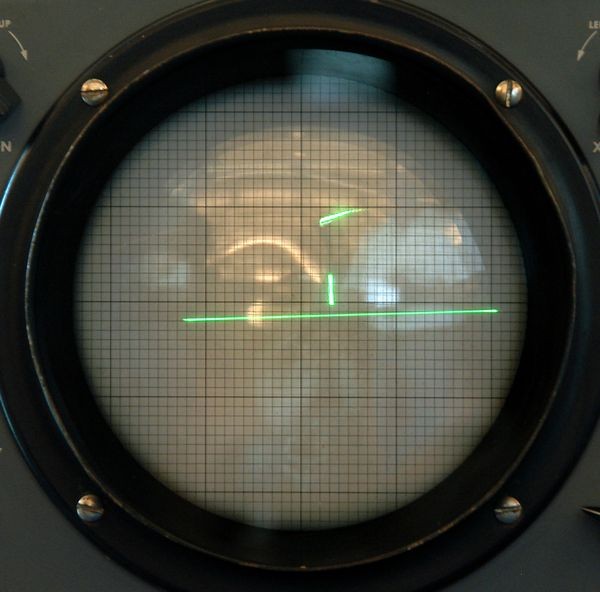Inventing a New Medium
Computer researcher Donald Davies and his Naughts-and-Crosses machine
This special-purpose machine was designed to play only Naughts-and-Crosses, or Tic-Tac-Toe. Davies went on to become an important pioneer in networking and artificial intelligence.
Inventing a New Medium
Computer games are as old as computers. The earliest machines were not intended specifically for play—but invariably were used for games.
Gaming grew in the 1960s as computers became more interactive and widely available. By the 1980s, increasingly powerful personal computers and dedicated game consoles had established a lucrative new entertainment medium. Today, computer games out-sell films.
Opening screen for the original Nintendo Legend of Zelda
Zelda was inspired by designer Shigeru Miyamoto’s childhood explorations of the hills near his home in Kyoto.
View Artifact DetailMagnavox Odyssey Simon Says game overlay
Overlays provided static graphics that the primitive game console wasn’t able to draw.
View Artifact DetailWolfenstein 3D screenshot
This innovative first-person shooter game is often credited with popularizing the genre.
View Artifact DetailFrom Play to Profit
In the beginning, games were just games. Computer professionals weren’t thinking about selling them. They were thinking of ways to test and demonstrate computers, and ways to relax.
Programmers in labs and universities wrote, played, and traded games. By the early 1970s, text-based games such as Adventure and Colossal Cave were widespread. Soon, microprocessors and personal computers became powerful enough to host the increasingly complex and graphical games. Companies such as Magnavox and Atari, seeing their profit potential, transformed games into commercial products.
In the decades since, companies have often recycled and revised popular games to suit increasingly sophisticated graphics, processors…and players.
Close-up of the Tennis-for-Two screen
A standard laboratory oscilloscope displayed the game’s image. Players served and volleyed using buttons and rotating dials. This pioneering game was successfully recreated in 1998 for its 50th anniversary.
View Artifact DetailThe Merlin analog computer at Brookhaven National Laboratory
William Higinbotham’s Tennis-for-Two ran on an analog computer and debuted at the Brookhaven Open House on October 24th, 1958. Hundreds of people lined up for a chance to play.
View Artifact Detail